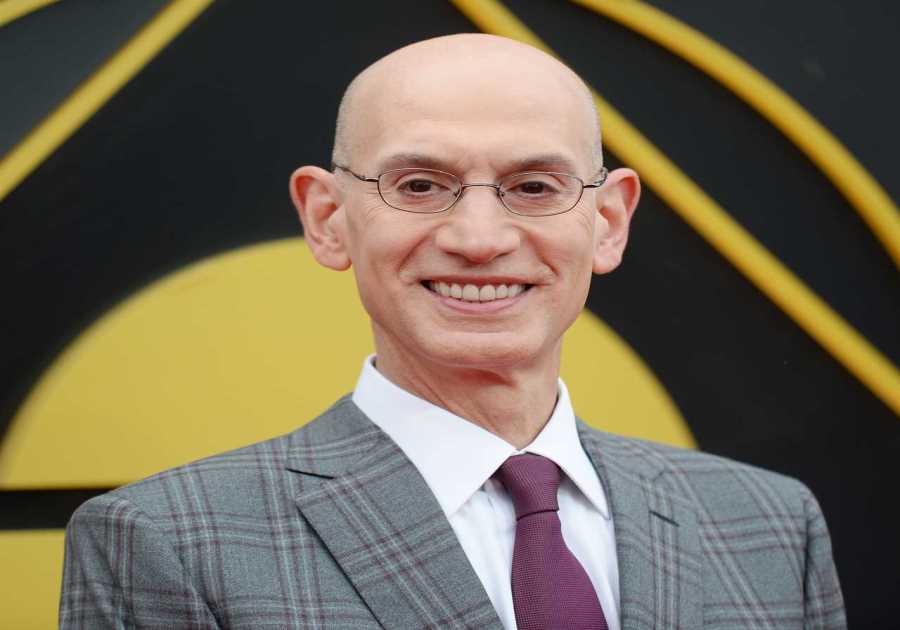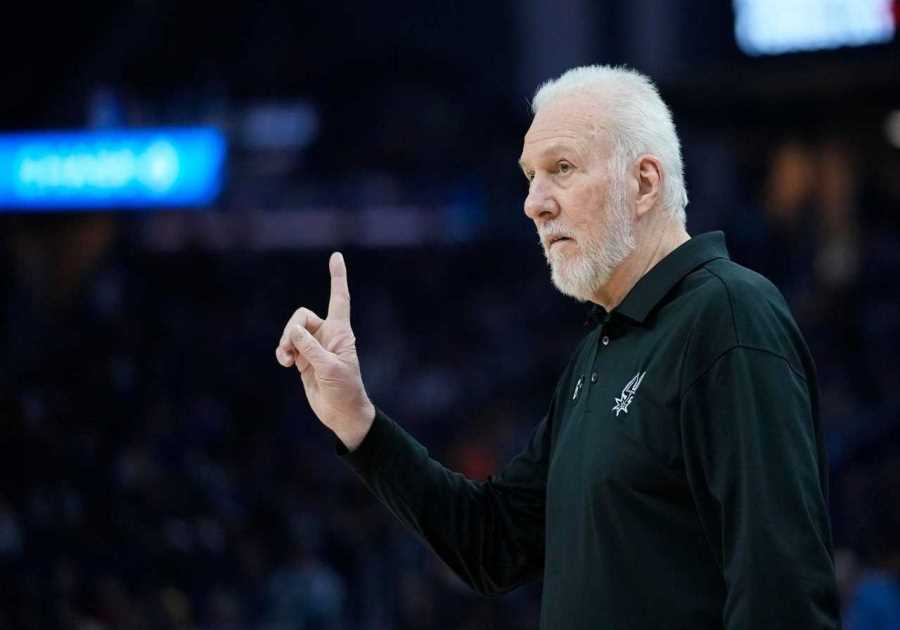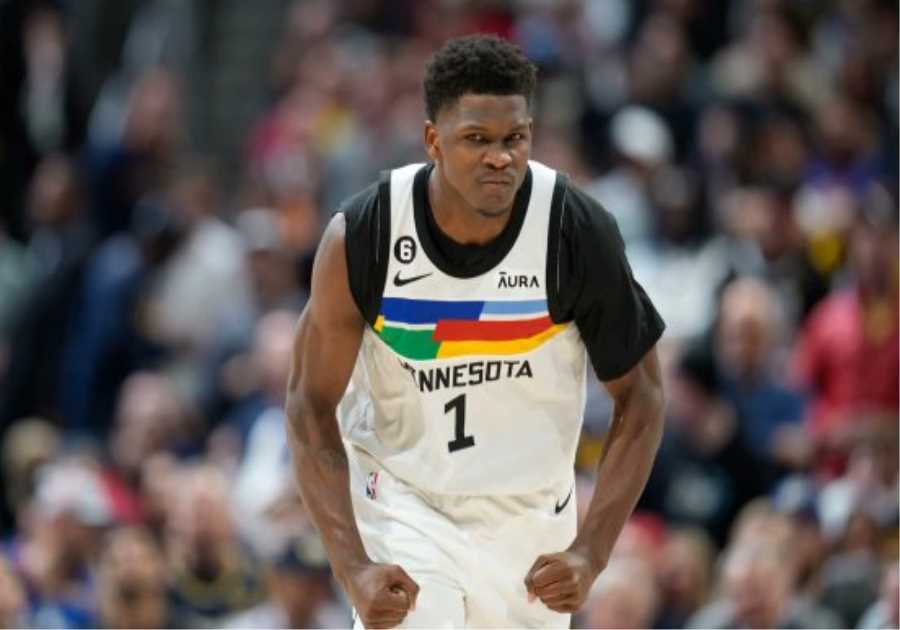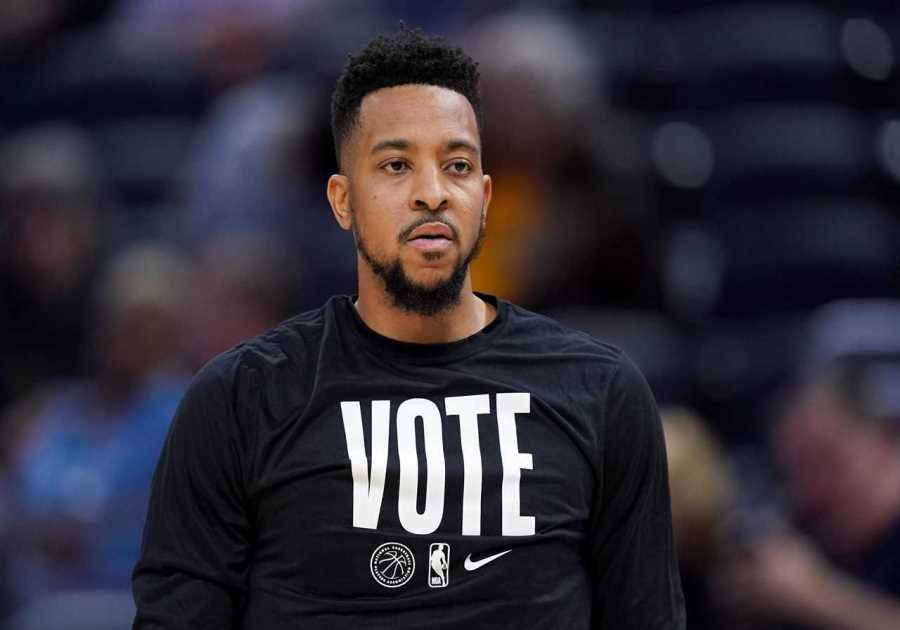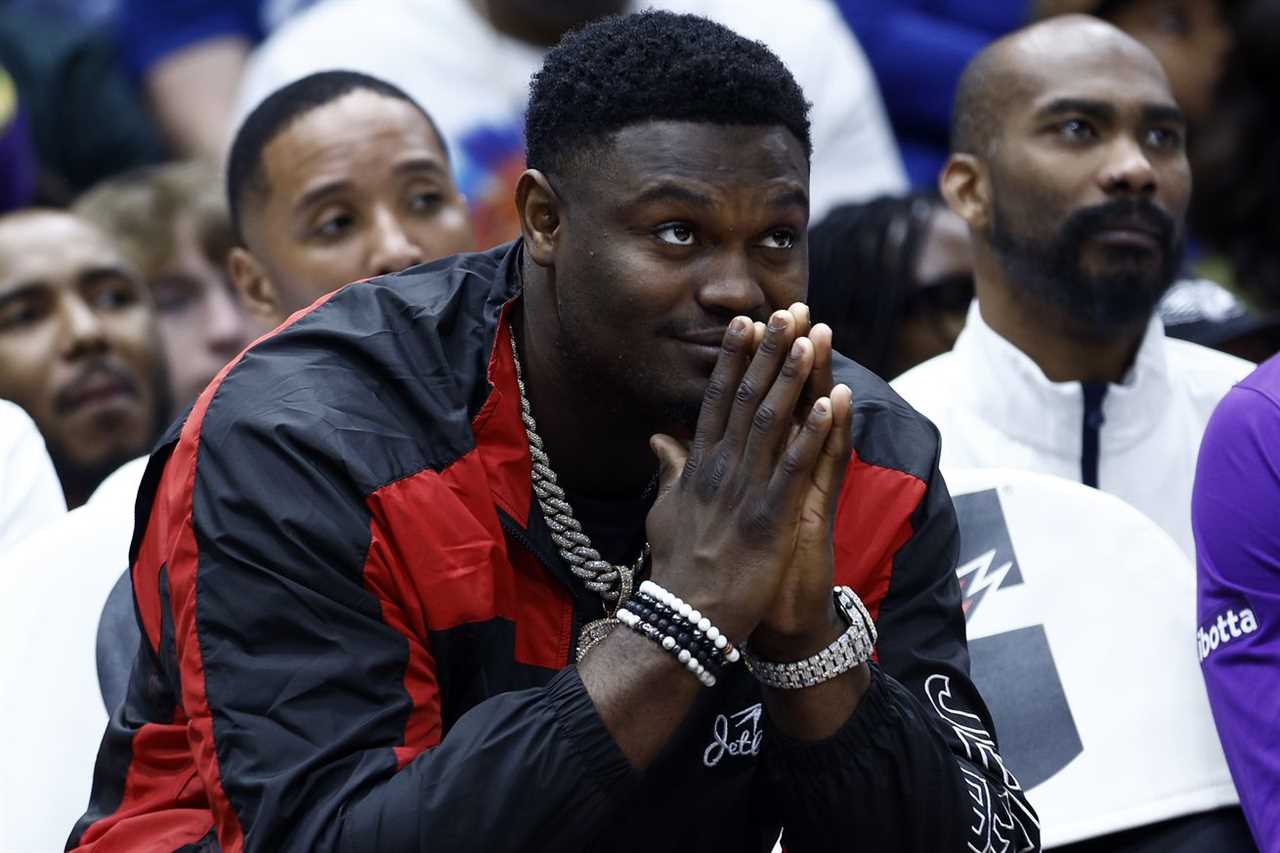
Photo by Chris Graythen/Getty Images
Go big or go home might be an easy choice when Scoot is waiting for you.
The Portland Trail Blazers are rumored to be active on the 2023 NBA trade market, dangling the third overall pick in the 2023 NBA draft, shooting guard Anfernee Simons, and other assets to try and land a big fish to swim next to seven-time All-Star Damian Lillard. The Blazer’s Edge Mailbag has been overwhelmed with questions about the possibility, and suitability, of Portland’s supposed targets in this year’s swap circus. Even those inquiries couldn’t cover the scope of players the Blazers have been linked to.
As we reset before tomorrow’s draft—with its potential for early news of trade plans—we’re going to rank the major players whirling around Portland in the media circus. Some of these have come from national sources, others local. A few have appeared more subtly, like the third percussionist in your favorite touring band suddenly taking a solo with his Peruvian shaker beads. Either way, here are our fairly-reasonable guesses about the potential for each player in Portland.
Yesterday we covered less-attractive trade rumors. Today we’ll delve into the deals that might have a ghost of a chance of working.
The Big Swing
New Orleans Pelicans forward Zion Williamson is the hot name on everybody’s lips at the moment. Years from now somebody will find this article archived and either go, “HA HA!” or, “DOH!” There is no middle ground with the 6’6, only-the-scale-knows-what-he-weighs-today big man. It’s the ultimate boom-or-bust move.
The “boom” comes from 26 points per game on 61% shooting from the field, and he doesn’t even have to try that hard to get it. Williamson has a supernatural combination of strength, bulk, and athleticism, making him impossible to handle for anyone south of prime-years Shaq. Zion was the Victor Wembanyama of the 2019 NBA Draft. For those counting, that was just four years ago. He’ll turn 23 in just a couple weeks.
The “bust” comes from Williamson being unable to stay on the floor. A combination of weight, bad luck, and the strain put on his body by his playing style have conspired to keep him out of 214 out of 328 potential games in his career so far. New Orleans maxed him ($33.5-$44.2 million per year from now until 2028) because they had no other practical choice. The decision proved controversial among league analysts, which shows how far Zion’s stock has fallen.
Williamson has more potential to alter the course of the franchise—up to and including a championship run—than any other player the Blazers could reasonably acquire. If the Pelicans are willing to trade him with the third overall pick as the centerpiece, it will indicate that they don’t think there’s a ghost of a chance he can actually do it. New Orleans would simply be offloading their Zion Problem on Portland. It’d be up to the Blazers and Williamson to prove them wrong.
Experts are still debating whether this move is realistic. Paradoxically, the more likely it is, the less the Blazers should want it. Portland has to hope that New Orleans misreads the situation or that Williamson becomes a different, yet still ultra-effective, player as he ages. Otherwise the Blazers are buying into a chance to experience Greg-Oden-like disappointment once again. That’s how Damian Lillard came into this league. It would be a sad way to send him out.
The Decorated Veteran
Toronto Raptors big Pascal Siakam stands among the most-mentioned targets for the Blazers this year. Toronto may be looking to retool following their slow slide from championship glory in 2019 and thus may be willing to move him.
Siakam was a key part of that run and has blossomed since, scoring 24.3 points per game with 7.8 rebounds and 5.8 assists in an All-Star season last year. He’s not a premium three-point shooter, but nearly everything else about his game—including defense—is superb.
Normally that would make him an automatic keep for the Raptors. But he’s 29 years old. They have forwards Scottie Barnes and forward OG Anunoby in the rotation already. They just picked up Jakob Poeltl to play center. Siakam may no longer be critical to their plans. Or, more specifically, they may value rookie sensation Scoot Henderson and further young compensation from Portland higher than an aging star forward whose contract expires at the end of next season anyway.
The Blazers are in the opposite position, wanting immediate help for star Damian Lillard. They’d have a hard time doing better than Siakam, at least on paper. He’s got defense, durability, and championship experience...the exact qualities they need.
Siakam would leave a short window, but that’s not a fatal flaw considering their timeline. He would cause a log jam with forward Jerami Grant and there’s the messy issue of that expiring contract. If the Blazers could work out those wrinkles, Siakam would be a good get.
The Young Stars
Two young stars have been mentioned in connection with Portland...players-in-waiting with more experience than Henderson or Brandon Miller would bring, but still plenty of upward potential that 30-year-olds lack.
Deandre Ayton
Deandre Ayton of the Phoenix Suns is reportedly on the trade block after several years of ups and downs. He scored 18.0 points per game last season, adding 10.0 rebounds. His defense is a work in progress but he’s adequate with room to grow.
Right now, Ayton’s expectations are measured against the first-overall pick the Suns spent on him in the 2018 NBA Draft. He hasn’t lived up to hope and hype. That matters to the team selecting him, not at all to the one trading for him. Being in the second position, Portland might have interest.
Ayton would have more freedom to blossom in Portland than he does in Phoenix’s packed lineup. On the other hand, he had a chance to contribute to a championship contender in Phoenix and couldn’t help them over the hump, even in a lesser role. That’s not promising. Henderson—the main player the Blazers would trade for Ayton—may be the better player overall. He’s both younger and cheaper.
Portland would also be retooling at a position that’s hard to get right in today’s league. Nikola Jokic and Joel Embiid are to modern NBA centers what “Mom” is to an infant. The world is divided into two categories: them, and everybody else. The Blazers could end up with the 4th- or 5th-best center in the league. That kind of upgrade would look good most nights, but they could still end up getting outmatched in the playoffs every year.
Brandon Ingram
Pelicans forward Brandon Ingram has also been mentioned in place of Williamson in Portland deals. The 26-year-old forward averaged 24.7 points while shooting 48.4% from the field, 39.0% from the three-point arc last season. He also notched 5.5 rebounds and 5.8 assists. He’d provide another scorer and shot creator alongside Lillard, evening out the starting lineup from its current guard-heavy configuration.
Ingram only played in 45 games last year, though. He appeared in just 55 the season before. In the six seasons since his rookie campaign, Ingram’s high-water mark has been 62 games. He’s missed a lot of time for a young guy.
Ingram’s defense is suspect. He was once tabbed as a player who just didn’t care about that end of the floor. He’s evolved from those miry depths of horror, but he’s still half-liability. That’s not exactly what Portland is looking for.
Neither Ayton nor Ingram would be as bankable as Siakam, but both would find chances to shine in Portland that they lacked elsewhere. If the Blazers think either has another gear, these young stars would fill lineup gaps in fine style.
The Safety Play
So far we’ve mentioned trades involving the third pick and an opposing star as the centerpieces, positing that Portland would move out of the draft altogether (or at least out of the lottery). Moving down is also an option, splitting the difference by acquiring a good veteran and a promising rookie.
If the Blazers wanted to explore this option, Myles Turner of the Indiana Pacers would be a good candidate. Indiana owns the 7th pick in the draft. Portland might swap 3 for 7, asking for Turner as compensation, likely throwing in Jusuf Nurkic to make the salaries work.
Turner is a better defender than Nurk, more athletic, and of similar age. He averaged 18.0 points, 7.5 rebounds, and 2.3 blocks per game last year, shooting 54.8% from the field. He wouldn’t turn around Portland’s fortunes alone, but he’d provide a platform for them to stand on while doing so. Add in the chance to draft Jarace Walker or Jalen Hood-Schifino and you can see the Blazers opening up future deals to get even more help.
Conclusion
It’s hard to tell exactly which opportunities will open up, but if any of the above plays are available, the Blazers would have to think about them, at least. Home run swing or bunting the runner into scoring position, they’re looking to move forward this off-season. One way or another, it’s going to happen.
The biggest question is, would Scoot Henderson—now their presumptive pick—do more for them than any of the above deals, let alone the less-desirable ones we covered yesterday?
Keep in mind the mantra we keep repeating: assets don’t just disappear. If Henderson plays like he’s supposed to, he’ll also be tradable six months, a year, or two years from now. The Blazers don’t have to bite on a suboptimal deal just because it happens today. They may decide to see what they’ve got in Scoot, then make their decision from a position of more surety later. Other than Williamson and perhaps Siakam, they can find similar opportunities to the above trade suggestions down the road.
If they have to make a move now, Portland’s first decision is whether they think Zion Williamson is worth the risk. If they do, nobody else compares.
If they skip Williamson, Siakam is the next best bet. If Toronto won’t let go of Pascal, then a trade-down for Turner and a lottery rookie might be better than going all-in on a younger star with flaws.
Overall, though, it feels like only Williamson and Siakam exceed that “better than Scoot (at least right now)” threshold. The Blazers will need to walk a fine line in their trade negotiations, making sure their purchase right now doesn’t cost them exorbitant interest later.
Dave Deckard
https://www.blazersedge.com/2023/6/21/23768537/portland-trail-blazers-trade-rumors-2023-zion-williamson-scoot-henderson-pascal-siakam-ingram-ayton
By: Dave Deckard
Title: Ranking the Best Blazers Trade Options
Sourced From: www.blazersedge.com/2023/6/21/23768537/portland-trail-blazers-trade-rumors-2023-zion-williamson-scoot-henderson-pascal-siakam-ingram-ayton
Published Date: 06-22-2023
Frequently Asked Questions
How long does it take you to become a NBA star?
To become a true professional NBA star, it takes a lot of dedication and time. To become a NBA superstar requires years of hardwork, physical conditioning, skill development, and years of dedication. On average, players spend three to five more years in college developing their skills before they make it to the draft. Once they are drafted, players must perform well in the NBA. This requires more coaching and professional guidance from trainers and coaches. Being a NBA legend is not something that can be achieved overnight or in a few years. You need dedication, commitment, time, and patience to achieve these accolades. If you are determined and have the right mindset, you can achieve your goals and become a NBA Superstar!
What is the difference between technical fouls and flagrant fouls in the NBA?
A technical foul in NBA refers to any unsportsmanlike behavior. This includes arguing with officials or excessive celebrating. A technical foul is a one-time free throw. The opposing team will also be allowed to keep the ball.
Flagrant fouls occur when a teammate makes excessively violent or aggressive contact. It can result in two free shots for the opposing side and possession of a ball. There are two levels of flagrant fouls--Flagrant one and Flagrant two. Flagrant one is a lesser offense than Flagrant 2 and doesn't result in an ejection.
Unlawful contact between two people on the court is called a personal foul. This usually refers to illegal hand-checking, pushing, pushing, or tripping an opponent. Personal fouls can lead to free throws or the possession of ball for the other team. Personal fouls, though, do not necessarily signify unsportsmanlike conduct, as opposed to flagrant fouls and technical fouls.
All fouls in the NBA may result in free throw attempts for the opposing team or possession of the ball. It is the intent behind the fouls and the severity of the contact that makes the difference between technical fouls and flagrant or personal fouls.
What rivalry does the NBA have?
The Boston Celtics and Los Angeles Lakers hold the title of the biggest rivalry in the NBA.
The NBA Finals has seen 12 meetings between the Boston Celtics (with 9 wins) and the Los Angeles Lakers (12 wins). Nine of these meetings have been won by the Celtics. They first met in 1959. Both teams excelled in the years following, especially in the 1960s, 1980s and 1990s when they would be facing each other six and three times respectively. They still met twice in that same year, despite the fact that 2000 was a new millennium.
Which NBA star is the most dominant scorer in the league now?
This is a subjective question because each player plays in a unique way that makes them different and helps them succeed. Kevin Durant, LeBron James and Stephen Curry are all popular choices for NBA's most dominant scorer.
Kevin Durant is more than a shooting star. He's also an offensive powerhouse! He has two NBA Championships and two Finals MVPs under his belt, as well as a regular season MVP title. This player is serious.
Statistics
- Williams would 'likely' accept a deal worth $14-15M/year; Celtics are 'unlikely' to offer such a deal (HoopsHype) (bleacherreport.com)
- "NBA first-round ratings drop 27 percent, 40 percent since 2017–18". (en.wikipedia.org)
- Between 2012 and 2019, the league lost 40 to 45 percent of its viewership. (en.wikipedia.org)
- As of 2014, 45 percent of its viewers were black, while 40 percent were white, making it the only top North American sport that does not have a white majority audience.[102]As of 2017Democrats than Republicans.[103]Outside (en.wikipedia.org)
- Meanwhile, the opening night rosters include a record-setting 234 players with some G League experience, according to the NBA ( Twitter link ). (hoopsrumors.com)
External Links
twitter.com
- Tweet / Twitter
- Sam Amico on Twitter: "Timberwolves Waive PJ Dozier, CJ Elleby and AJ Lawson - Hoops Wire https://t.co/xKu1ZTuQZN" / Twitter
basketball-reference.com
- Thomas Bryant Stats, Height, Weight, Position, Draft Status and more | Basketball-Reference.com
- Dennis Schroder Stats, Height, Weight, Position, Draft Status and more | Basketball-Reference.com
sports.yahoo.com
- Yahoo Mail, Search & Weather
- The lowest ever recorded viewership for Game 1 of the NBA Finals is seen in ratings history
si.com
- NBA Free Agency Preview: The Biggest Questions and Rumors
- Free from Quarantine: The NBA bubble Is A Unique Experience
How To
Is it possible to get paid by the NBA for injuries sustained by players?
NBA players with guaranteed contracts are entitled to their entire salary, even if they are disabled or injured. Some have even earned millions without even playing a game. Their contract may be terminated or they could lose their bonuses. Players with non-guaranteed contracts will not usually receive any payment until they become healthy enough to return to the NBA. For those who qualify, the NBA may offer assistance with disability payments or a settlement in a lump sum. However, no guarantees of payment are made for injury-related absences. Additionally, teams and the league may assist those in need on a case-by-case basis.
Through the Injury Disability Plan, assistance can also be provided by teams. It ultimately depends on the individual and their team's circumstances. In certain cases, players might be able to reach an agreement with their teams to buyout their team to help them get money in the event of their injury. Players need to understand that there are no guarantees when receiving payment when injured, but the team and the league can provide some assistance. Each situation should be considered as an individual. The NBA has detailed rules for injuries and payment during injury absences. Knowing these rules can help players make agreements with their teams, or to make informed financial decisions about the future. If you have any questions or concerns it is important to talk with a professional.

